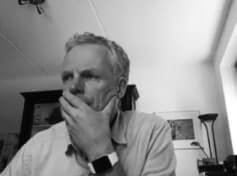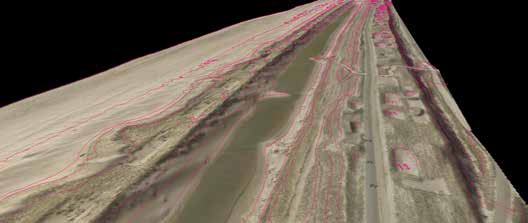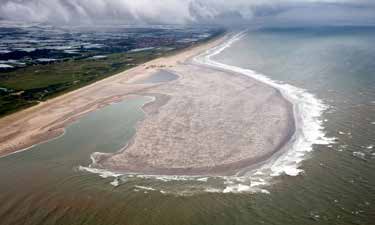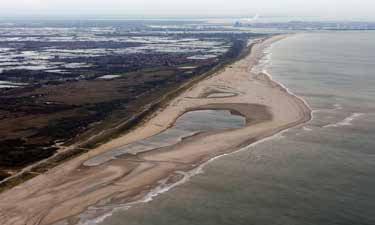Science and research are fundamental to the development of all Building with Nature projects, and scientific rigor represents one of EcoShape’s core foundational values. This is exemplified by the cohort of PhD students who began their research journeys as part of the first Building with Nature program, which grew and continued as more students and postdoctoral researchers joined forces with Building with Nature projects.
Typified by complex, transdisciplinary interactions that are dynamic on multiple scales, the science behind Building with Nature is both interesting and challenging: every Building with Nature project can be considered a large-scale, unreplicatable experiment in its own complex system setting. Integrating disciplines with their own specific terminology and distinct scientific approaches is necessary to unravel deeper analyses of processes and interactions. It is important to increase efforts here, as scientific progress is invaluable given the urgent need for Nature-based Solutions.

1. Peter Herman 
2. Stefan Aarninkhof 
3. Kathelijne Wijnberg 
4. Nathalie Seddon
2. Stefan Aarninkhof – Head of Hydraulic Engineering Department; Professor of Coastal Engineering, Delft University of Technology
3. Kathelijne Wijnberg – Professor and Chair of Coastal Systems and Nature-based Engineering, University of Twente
4. Nathalie Seddon – Professor of Biodiversity; Director of the Nature-based Solutions Initiative, University of Oxford
How did your research lead to Building with Nature?
Peter Herman: Through Building with Nature, the landscape became more than an empty canvas. The design of a project is conceptualized as adding something to an already existing, already functioning landscape—functioning in the ecological, geomorphological, but also human sense. Building with nature pays more attention to design and how it affects relations between nature and geomorphology, and also how it will be perceived by humans and affect the association of humans and the landscape. As an ecologist, of course, my attention is mostly focused on what it does to natural processes. A very important question for me is: how do these natural processes really work? At the Sand Motor, if you examine the populations of benthic animals, you see higher diversity after construction. That is not because the number of species per sample is necessarily higher, but the difference between the samples has increased. Gradients and contrasts increase and create combinations of environmental factors that do not normally occur on the coast. Over time, the weird combinations tend to disappear, but it takes years for the sediment composition, physical forces, and animals to settle into a new equilibrium. I am interested in understanding and modeling these processes.
Stefan Aarninkhof: Every project has unique characteristics that require investigation of the underlying processes. This is crucial to enable the design and implementation of solutions. For example, the initial conditions at the Sand Motor were tremendously dynamic, and over time, change slowed. We came across a similar pattern in studying the natural foreshore dynamics at the Houtribdike, which shows surprisingly similar behavior.
Kathelijne Wijnberg: What I consider important in Building with Nature is using the coastal processes to solve coastal problems. Time scales are a crucial consideration here, because coastal processes take time. Each pilot project is the first effort to understand the processes that move sediment and the vegetation dynamics. I advocate following them through the end of their design lifetime to see whether they really deliver and whether we can make improvements or adjustments. To that end, I am interested in the development of monitoring techniques. Also, we have not paid enough attention to the role of people in how the solution evolves. I have been involved in the Sand Motor project as well. We saw how the space was created: People built beach houses for the tourist economy, and they also raked the beach. Where they clean the beach determines where vegetation develops, which interacts with dune formation. We do not yet know whether there is a long-term effect. We see a difference in the short term, but does that matter in the end, over the whole project?
Nathalie Seddon: People often ask about the best combination of species for reforestation in a particular country. Even in the UK, where there is a deep body of knowledge, we just do not know. We think we are transitioning to a more Mediterranean ecosystem. Arguably, we should be talking about restoring habitats with at least some Mediterranean species, but we do not know what will work. That is why we need experimentation and to look at different combinations of species and types of landscapes. This method calls for long-term monitoring and evaluation. Given the moving goalposts that we all work with, scientists can do their best to propose a design for the landscape or a plan for nature and the landscape. What we do know is how to design experiments, and our findings can inform the design. I see scientists as experimentalists, rather than as people with knowledge about how to do things.
Kathelijne Wijnberg: There is no Building with Nature solution that works all
the time, or everywhere. There is a need for monitoring so that we can learn when solutions fail and what factors cause their failure.
“There is no Building with Nature solution that works all the time, or everywhere.”
Kathelijne Wijnberg
Stefan Aarninkhof: As scientists, we need to learn from full-scale projects in
the field. Yet often, these projects come with monitoring requirements that are not aligned with scientific needs. For this reason, scientists should be at the table early to ensure monitoring begins early enough and with sufficient focus to meet scientific standards. I believe monitoring should become an important component of all projects, which points to changes in the way these projects are run. Delivering a project on time and within budget should no longer be the standard for project completion for government and industry leaders. We need to embed an incentive to learn for subsequent projects, to stimulate long-term thinking, and to make future improvements.

Nathalie Seddon: Nature-based Solutions can only achieve so much in any
one area. Only when aggregated across all landscapes and regions can they mitigate climate change and support adaptation and biodiversity. Current advocacy around Nature-based Solutions is problematic, suggesting it can provide a triple win or deliver on all seventeen sustainable development goals. Recently, there have been numerous overblown statements about the mitigation potential of working with Nature-based Solutions and misunderstandings about offsetting, leading to an overemphasis on afforestation rather than managing and restoring natural ecosystems. I think these advocacy claims undermine the movement. We scientists must understand the interplay of technology and ecosystem-regulating services within the context of these multi-functional landscapes. There is so much we have yet to learn.
How does your work relate to other disciplines, notably, perspectives and methods from the social sciences?
Nathalie Seddon: I currently have two main bodies of work. The first aims
to improve the socio-ecological framework and use Nature-based Solutions to integrate the socioeconomic system and the ecological system. I try to understand ways of working or building with nature in such a way that the vulnerability of the whole system is reduced in a rapidly warming world. The second body of work seeks to better understand the actual mitigation potential of Nature-based Solutions. This includes reframing global mitigation
potentials in terms of peak warming, temperature goals, and past agreements,
as well as presenting a not-too-policy-friendly, but nonetheless nuanced, message on ways of working with nature to address mitigation. In both, the
socioeconomic perspective is a driving factor.
Kathelijne Wijnberg: In nature-based science projects, social scientists have contributed to understanding how people use the space that is created. Human interaction is a core belief in modern landscape architecture, and we feel the effects in more urbanized settings, for example, the spillover of economic activity on beach-dune interfaces. We need social scientists to help us understand why people act as they do, how they interact, how they behave with regulation, how regulations are created, and why they change: all
aspects of governance.
Peter Herman: I do not see the social sciences speaking out enough on questions of power and injustice. Of course, it is possible to analyze whether there should be many sand motors along the Dutch coast or not—taking account of the commercial pressure from big dredging companies. If all the sand is brought to the coast for meganourishments, large dredging companies can use their big ships and outcompete the small operations that are much better placed to do today’s small-scale nourishments. If neglected as a factor that determines policy, what is really under discussion? Seemingly unrelated aspects of power play are incredibly important for social scientists to consider.
“People need to be involved in a project from the outset if they have a stake in it.”
Nathalie Seddon
Nathalie Seddon: There is so much work already on those topics. My colleague Stephen Woroniecki has done brilliant work on ecosystem-based adaptation in Sri Lanka, examining the issue of power and how the implementation of adaptation measures leads to increased marginalization among local people. As a natural scientist, I too struggle with the language of co-benefits, co-design, and co-creation. These terms convey a critical value: that people need to be involved in a project from the outset if they have a stake in it. Each project’s longterm success depends on its stakeholders having agency, and their buy-in sustains projects once funds run out. Social scientists have amassed a body of evidence supporting this. In Southeast Asia, when mangrove restoration occurs in a top-down way, the land is converted back to shrimp farms once the money runs out.
And what is the role of science?
Kathelijne Wijnberg: For solutions to work, we need to understand how natural systems work. I believe scientific understanding is the basis of all solutions. The long timespan, tens of years, over which Nature-based Solutions develop can pose a challenge.
Stefan Aarninkhof: I cannot take the credit, but I believe science has been the biggest enabler of momentum for Building with Nature. Twenty-five years ago, there were people like Ronald Waterman who talked about Building with Nature. There were scientists—particularly ecologists and morphologists— who started working together, studying the interaction between vegetation and sand, and shaping the field of biogeomorphology. My colleague Mindert de Vries always asked whether anyone had considered the ecological impact of our work. That was the first time we began using the word “ecology.” The collaboration led to new concepts and new solutions, gaining momentum over time.
Nathalie Seddon: We need to build transdisciplinary communities to bring different stakeholders and different types of scientists together in the same conversation. It is already happening at various scales. It is crucial to have scientists, practitioners, policy-makers, and other stakeholders together right from the beginning.
Peter Herman: As scientists, we are most involved before the process starts. We have a significant role inspiring people, teaching them what we know about natural processes, and sharing ideas that can form the basis of the design. The other important phase for us comes afterwards, in monitoring, evaluating, gaining insight, and giving new insight for subsequent projects. During project implementation, the focus is on political pressures, financing, and approvals. As natural scientists, we have no role to play there.
“Science has been the biggest enabler for our momentum for Building with Nature.”
Stefan Aarninkhof
Stefan Aarninkhof: I disagree. It depends on the situation, but the project
definition phase is very important. If designed with a clear pilot character and learning objectives, scientists have a big role to play. This was true for the Sand Motor, where innovation was a leading design principle. We had interactive design sessions in which scientists like Norbert Dankers were crucial in setting the final design of the Sand Motor. I still remember him saying that we should address the seals. Their need for resting locations resulted in moving the Sand Motor offshore, with water in between. Forty years ago, engineers were in charge of water safety issues, and solutions were developed according to their opinions. It is important for us engineers to realize the world has changed. Today we operate in a much broader society. It is what we try to teach our students as well. Of course, the engineering needs to be sound, but it must be positioned in a broader context, and awareness of the needs and priorities of other stakeholders is key. I find students are very open to these ideas, and for them, it is self-evident that designing with natural systems implies participation in a larger social system. This understanding of Nature-based Solutions and Building with Nature fulfills what students in hydraulic engineering now need to develop a meaningful career.
Peter Herman: I see in our students the eagerness do something good for the world. Many engineering students are interested in incorporating biological processes into their thinking and modeling. We are working to realize interdisciplinarity. I had a student who wanted to incorporate the effects of reeds on currents and on sediment dynamics. She mentioned that there was limited literature on reeds. She was not aware that using the Latin name for a species gives you access to much more biological literature than the common name. She did not know how biological knowledge is structured. Bridging these kinds of conventions is difficult. We have a lot of work to do to make people aware of the vocabulary, concepts, and traditions in other disciplines to make interdisciplinary work productive and meaningful.


